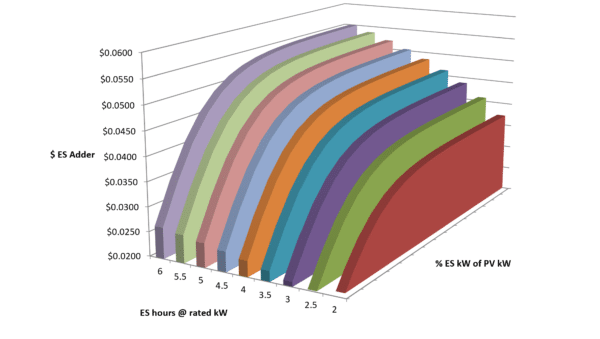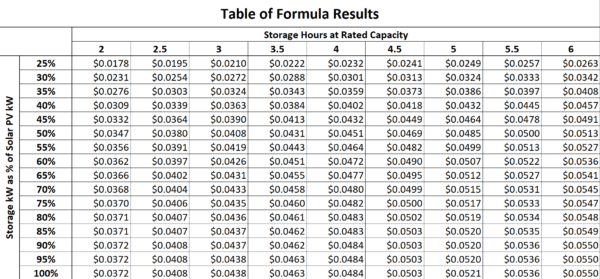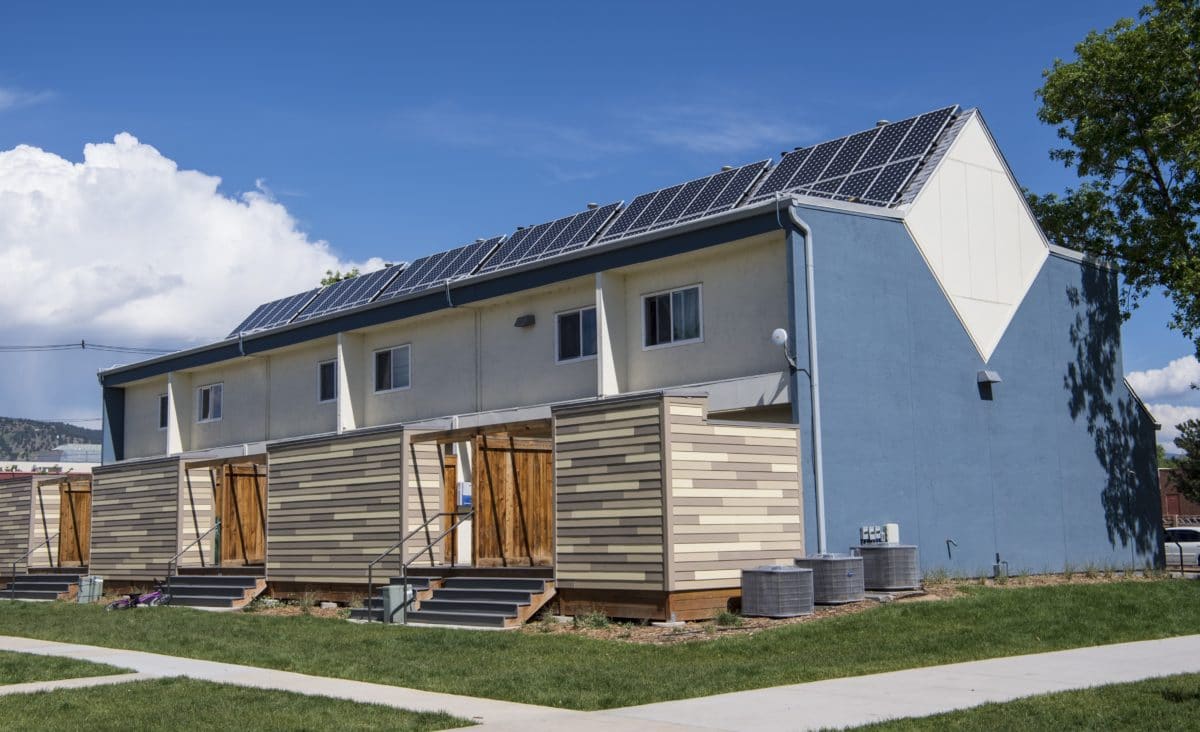Let’s be blunt: In most states, adding batteries to a residential solar system will significantly slow down the payback period.
According to five-year-old Census data, around 18.3% of homes claim to have home generators. Those generators require maintenance and fuel, and they only pay off if you are served by a rural power grid or live in a disaster-prone area.
That must mean there is more value in residential battery backup systems than a simple return on investment calculation can show. And, after recent grid events in Texas and California, the value of a battery backup is impossible to ignore.
Michelle Davis from WoodMac Renewables & Power said that 7% of residential solar capacity was paired with storage in 2020. She said that growth rate is on track to more than double in 2021, to 16%.
Anecdotal evidence in “hot markets” suggests this value could be closer to 60% if batteries were available. Hawaii practically requires energy storage, because residents there may not export excess solar power to the grid.
Viable?
However, most residential solar+energy storage is not financially viable for two main reasons.
First, most solar installations occur in states where net metering is allowed. And since net metering enters a credit for excess daytime generation to a homeowner’s electricity account, there really isn’t a financial motivation to install batteries and store that electricity.
Second, there really isn’t any other path for a single home’s energy storage to make money. For instance, it was only two years ago that Sunrun won the rights for 5,000 residential solar+storage systems to participate in the New England ISO wholesale marketplace. Thus, for most people in most states, energy storage is an emotional purchase, based on a consumer’s confidence (or lack thereof) in their power grid’s resilience.
In key markets – without a doubt – energy storage is worth some money.
For example, in Massachusetts, two programs support residential energy storage economics. The first is the SMART program. We’ve covered how solar is paid handsomely in the Bay State; this same program also pays homeowners to couple batteries with solar.

The above image is from the state’s Energy Storage Calculator. Roughly, this depicts the outcome of an equation that calculates your energy storage incentive. The underlying data are in the table below.
The equation is based on the ratio of energy storage system size to solar system size. The state first looks at the ratio of your system’s solar panels to its battery inverter sizing, and then looks at the number of hours that the battery can output energy at that rate.
For example, a standard Tesla Powerwall that is 5 kW/13.5 kWh when installed with a 10 kWdc solar system would add around 3.8¢/kWh to the standard incentive price. This number is rough as there are other equipment nuances, but close enough. So, if a 10 kWdc residential solar system generates 12,000 kWh in a year, the customer stands to earn an additional $456/year.
But, when we consider the install price of roughly $12,500 for most Tesla Powerwall systems and subtract the 30% tax credit, that leaves a 19+ year payback. This does not “pencil.”

The second Massachusetts program is known as Connected Solutions. Here, solar homeowners are paid to allow the utility to use their battery to manage power grid peak demand moments. Vermont’s Green Mountain Power first figured this out, and they have saved state electricity payers millions of dollars over the years, all while offering home resilience.
The program offers homeowners a potential return of $1,375 per year. Combine that with the above SMART incentive cash and the payback period is shortened to 4.7 years. Now we’re cooking with electricity!
A desert ripe for growth
Beyond the SMART program, the markets where batteries make financial sense become scarce quickly.
As mentioned, Hawaii’s rate structure – no net metering and no export of electricity to the power grid – forces energy storage onto homeowners. Coupled with a high price of electricity, residential storage makes sense there.
California’s SGIP energy storage incentive program strongly supported residential energy storage, at least for a while. However, because of heightened concerns over wildfires, it is in extremely high demand and quickly running out of cash. Shifting residential solar installations into a “time of use model” marginally helps the financials, but not enough.
Enter Sunnova’s SunSafe offering and various other residential solar lease companies. While this author prefers a home energy generation ownership society, it’s hard to argue with Sunnova’s approach: No money down (typically), 25 years of operations and maintenance, and low interest rates.
Let’s be blunt one more time: For Texans who were without heat and power during the multi-day mid-February blackout that killed 200 people, our financial viability calculations for energy storage go straight into the trash.
John Fitzgerald Weaver is a solar power professional, known digitally as the ‘Commercial Solar Guy.’ His company has a construction license in Massachusetts, and directly manages projects in MA & RI. He may be reached at commercialsolarguy@gmail.com.
This content is protected by copyright and may not be reused. If you want to cooperate with us and would like to reuse some of our content, please contact: editors@pv-magazine.com.









If you have a lot of power failures that last longer than 4 hours, a “Power Wall” or battery system can be worth it to keep your refrigerator or freezer cold enough for the food to not spoil. Your system needs to work without the utility, have an approved transfer switch to disconnect your off grid back up from the meter and have it’s own pure sine wave inverter built in. If you do not have power failures a lot, then the batteries could be used to power you through the “Time of Day” higher electricity prices between 4:00PM and 9:00PM or charge your electric car or truck during peak prices hours instead of buying utility power. If your utility gives you “dollar” credits for generating power during peak periods then you could also gain more by putting the extra battery power on the grid during peak hours, but, many utilities, like PG&E in California, have limited the maximum peak generation, during peak hours, from battery systems, to 100 Kilo Watt Hours per month. Everything above that, they get to keep without compensation to the homeowner.
I have a hard time believing that 18% of homes in the U.S. have a generator. I don’t know anybody that owns one – including my cousin who has a ranch in Texas. I would think it is closer to 1.8% and even then it is probably high. I would believe that 18% of homeowners don’t know what a generator is, though.
Hey John, being from South Florida, I bet 50% of the nice homes have generators installed. We get whacked by hurricanes often enough, and lose power long enough, that it is worth it. In the summer of 2005, living in West Boca Raton, I got hit by three hurricanes – including one that knocked out power for multiple weeks.
John, great roundup of current residential storage economics. Btw, great to see you back.
Thank you Gary, you just made my morning 🙂
Tesla numbers/kwh are far higher than 3.8cents/kwh.
At $7k it’ll need to store at $.10/kwh added to charging costs so power from a Powerwall is more like $.20/kwh costs.
So it won’t make money unless saving power costs over that let’s say $.30/kwh it’ll need to store 70k kwh to pay for itself.
On all these depend where you live, YMMV.
The solution to bridge until lithium prices come down to earth is a golf cart lead 48vdc nominal 8kwh pack for $800.
I hope to sell solar with storage, DC generator this summer at less than most charge with just grid tie/kwh.
If your power is out for 2 to 3 days in a winter event and you think that the 13.6 KWh of the Tesla Powerwall will make anything more than a dent in your discomfort, then your last name must be Musk. Residential battery backup is only for the smallest of contingencies or for where energy costs are above 40 cents per KWh at times and you can justify load shifting to avoid the higher cost energy periods.
Thankfully, the economics of batteries and solar are in our favor. As technology and market forces bring down the prices of batteries and solar panels, we will see a greater and stronger adoption of solar+storage.